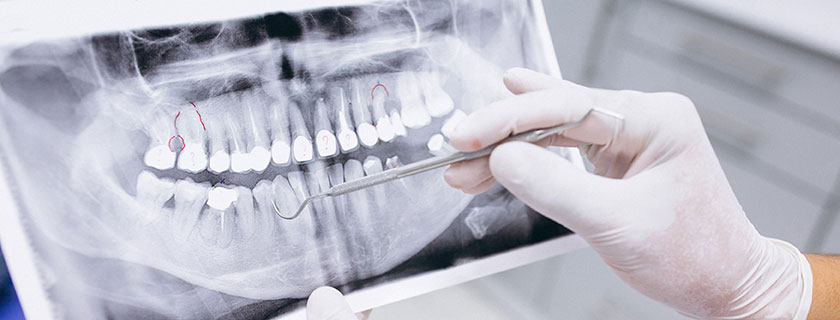
Jaw joint disorder is the deterioration of the harmony between the jaw joint that connects the lower jaw and the upper jaw and the surrounding tissues with a sudden effect or over time. If left untreated, serious symptoms can be observed, which can lead to locking of the jaw. Therefore, the earlier the treatment is started, the higher the success of the treatment.
FAQ
What Are the Symptoms of Jaw Joint Discomfort?
Over time, the symptoms of jaw joint disorders, which begin mildly, can increase over time and turn into more advanced problems such as severe jaw joint pain, head, neck, shoulder pain, noise from the joint, jaw protrusion, sliding or limited opening of the jaw.
What are the Causes of Jaw Joint Disorders?
There are many factors that predispose to jaw joint diseases. The most important of them are;
- Teeth clenching and grinding (Bruxism)
- Stress
- Continuous one-sided chewing
- Faulty prosthetic procedures that affect the relationship of the jaws with each other
- Tooth deficiencies
- Traumas and injuries to the jaw area
- sports accidents
- Tumors and systemic disorders affecting the head and neck region
- Very long and traumatic dental procedures
- Posture and posture disorders
- Neurological, psychological and psychiatric problems
- Congenital anatomical disorders
- They are parafunctional habits such as chewing gum, biting a pencil, and biting nails.
How is Jaw Joint Disorders Diagnosed?
In the diagnosis of jaw joint diseases, a detailed examination of the teeth and closure system, chewing muscles and jaw joint is performed. If necessary, the diagnosis is made by applying intra-articular imaging methods such as MRI.
How is Jaw Joint Discomfort Treated?
The methods to be followed in the treatment of jaw joint disease can be defined under various headings in line with the cause and severity of the disease. The aim of the treatment is to restore normal and painless jaw functions to the patient. Collaboration with the patient is very important in this process.
The type of treatment is determined according to the degree of discomfort. For most people, these symptoms are temporary and do not cause a more serious problem. After the factor causing the discomfort is eliminated, the complaints decrease and end.
In most cases, the combined use of these treatments yields effective results. Only one treatment may not cure the disease.
Soft diet : It can sometimes be beneficial to reduce the pressure on the jaw joint and chewing muscles by consuming foods that do not require much chewing. It is necessary to avoid very large pieces and hard foods that cause us to eat by opening the mouth too much.
Ice packs, exercise and hot applications : Exercises related to opening and closing the jaw recommended by the dentist, as well as cold or hot applications that should be done from the outside to the joint area at certain frequencies can provide relief.
Medications: The dentist may prescribe pain relievers and anti-inflammatory drugs, muscle relaxants to relieve muscle pain and prevent contraction of the jaw muscles. He may also recommend sedative drugs when necessary.
Botolinium Toxin (Botox) application: It will reduce the load on the joint as it will prevent tooth clenching by reducing the activation of chewing muscles that cause tension.
Splints: A splint is a transparent, removable appliance that is placed between the teeth, applied to the lower or upper jaw. It allows the lower jaw, which is accustomed to incorrect closure, to learn to close correctly, the muscles to relax and the correct movement of the jaw. Depending on the problem in the patient, it may need to be used only at night or for 24 hours. The splint eliminates the tight contact of the teeth, allowing the lower jaw to move freely and comfortably. Correctly functioning lower jaw and its muscles will ensure that the jaw joint is placed in its correct place, and the discomfort and pain of the muscles and joint will disappear.
Transcutaneous electrical nerve stimulation (TENS): This treatment uses low-level electrical current to relax the facial muscles and jaw joint. This can cause pain in some individuals.
Ultrasound: Ultrasound therapy is heat therapy, which is usually applied when the joint hurts or has difficulty in movement.
Trigger point injections: The dentist injects a pain reliever or anesthetic into the facial muscles for this treatment. While showing the pain relief effect, it is beneficial for the patient to stretch the jaw muscles with simple exercises.
Arthroscopy: Like most surgeries, arthroscopy requires general anesthesia. It allows the maxillofacial surgeon to examine the damage in and around the jaw joint. Depending on the cause, the diseased tissue is cleaned or the location of the disc or condyle is corrected.
Open joint surgery: If there is degeneration in the jaw joint or tumoral structures around the joint, or in cases of serious injury or fracture, open joint surgery is performed. Complete recovery in this surgery is more difficult than in arthroscopy. There is also a higher chance of scarring and nerve damage.